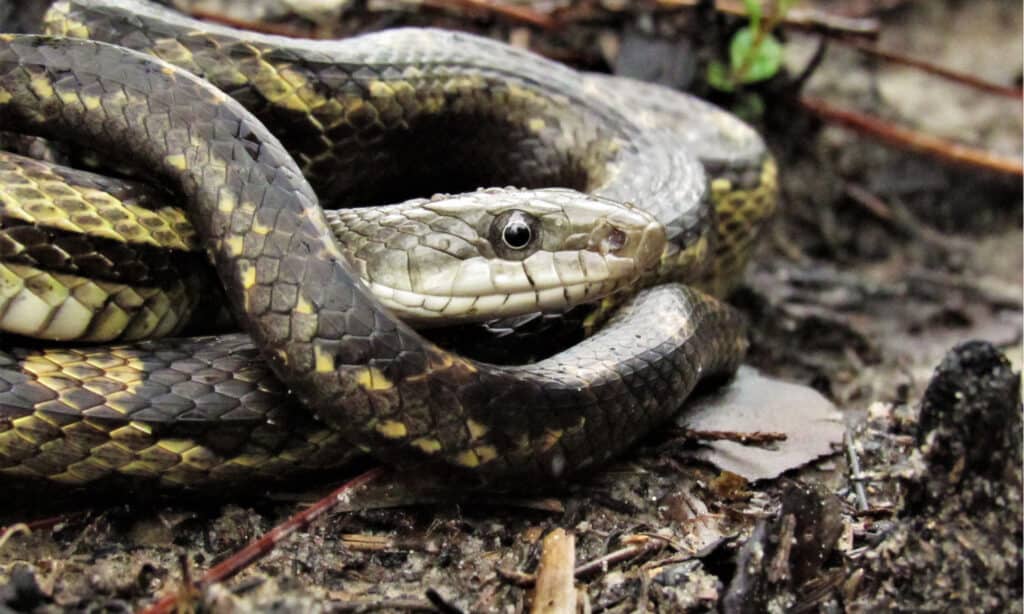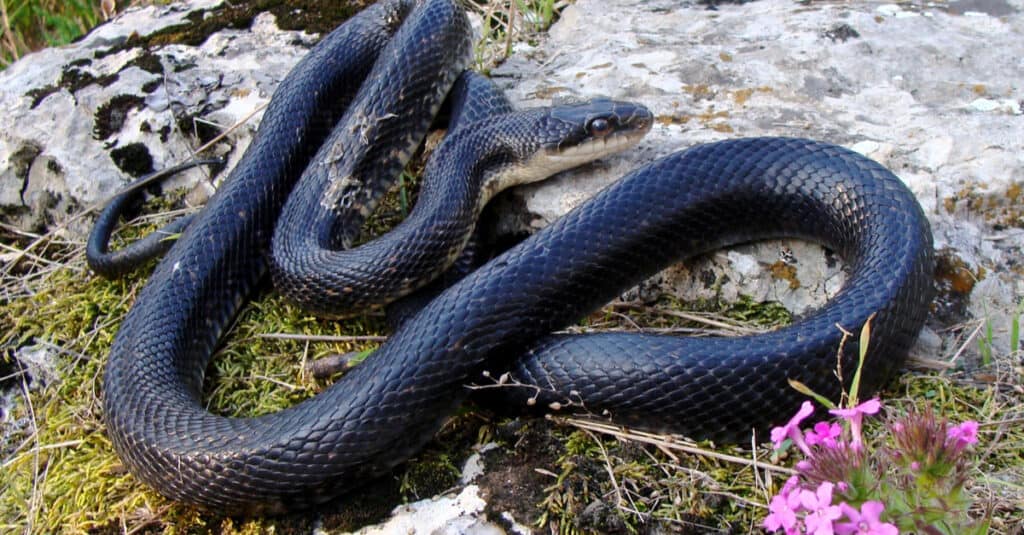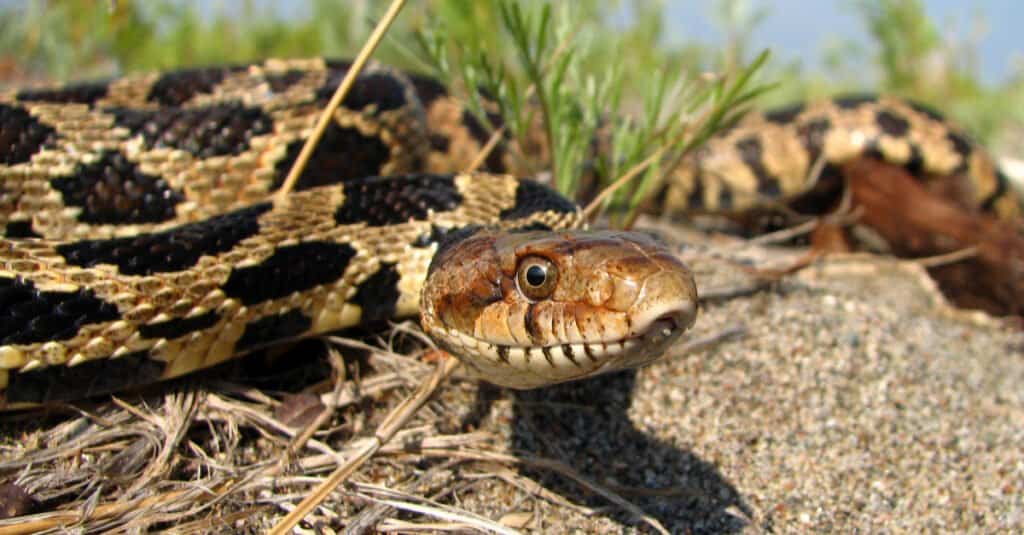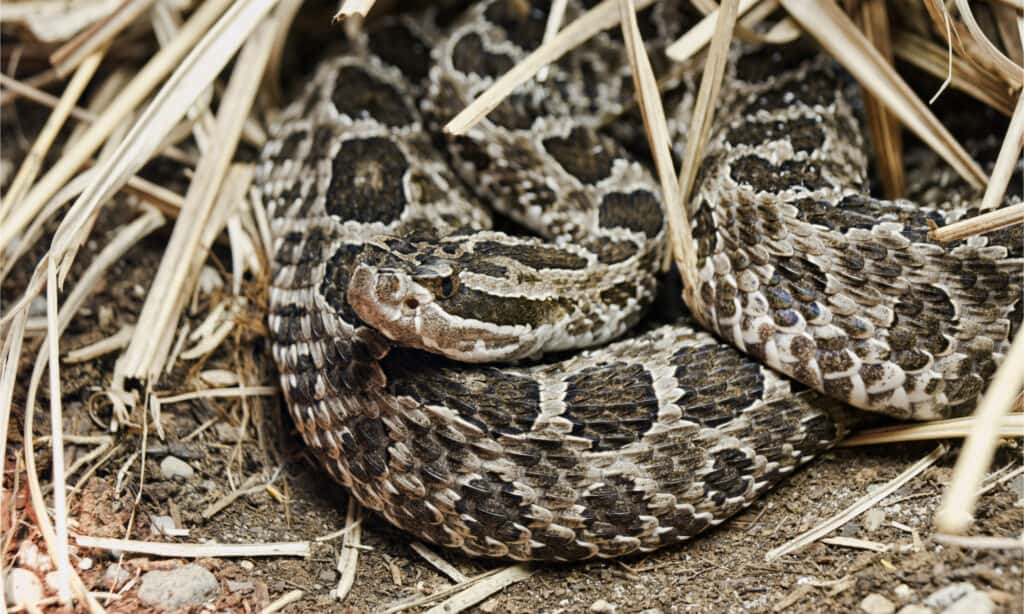Michigan is a beautiful state, and for the outdoor lover, it could be the perfect summer vacation destination. But any lover of the outdoors will tell you, that it is crucial to know all about the local wildlife you might encounter, especially the potentially dangerous species like snakes! The largest (and most dangerous) snakes in Michigan are the Eastern Massasauga rattlesnake, and it is the only venomous snake in the state. However, while it is the only dangerous snake in the area, it is far from the largest snake species in the state. It must compete with three other species for the top slot, and two can get up to six feet long!
The Largest (And Most Dangerous) Snakes In Michigan
Michigan only has one truly dangerous snake, but when it comes to size, there are three contenders that can be up to six feet long! We will start with the two species tied for the largest snake in the state, then we will get into the only snake that holds the title for the largest (and most dangerous) snake in Michigan!
Grey Rat Snake

Gabbie Berry/Shutterstock.com
The grey rat snake is tied with the black rat snake as the largest species in Michigan, and both are species grouped under the common name “eastern rat snake”. This species can be identified by its medium gray overall coloring and its darker grey blotched markings. Additionally, the species’ underbelly has a distinct light grey and dark grey checkered pattern of markings. Grey rat snakes have a lean and agile body with a small, narrow head and rounded pupils.
The grey rat snake is commonly found in Michigan, but its population is declining. Due to this, they are classified as a special concern species.
Black Rat Snake

Matt Jeppson/Shutterstock.com
Another species of rat snake, the black rat snake is tied with its grey cousin for Michigan’s largest snake species. When young, the black snake is medium grey overall with darker grey blotching along the back. When mature, its coloring darkens to an overall glossy black with a white underbelly that stops at the mouth and chin. Like other rat snakes, it has a long and lean form, a small, narrow head, and rounded pupils.
The black rat snake is commonly found in the same locations of Michigan as the grey rat species. Due to population decline, it is also listed as a species of special concern.
Eastern Fox Snake

Ryan M. Bolton/Shutterstock.com
The eastern fox snake can be identified by its light to golden brown overall coloring, brown or black splotches, and its yellow and deep brown checkered underbelly. The species has a lean and agile body, rounded triangular head, and round pupils.
Eastern fox snakes are strong swimmers and are mostly found near rivers and shorelines but are also frequently found in urban areas. Like the grey and black rat snake, this species’ numbers are also declining due to loss of habitat, and it is listed as a special concern.
Eastern Massasauga Rattlesnake

DnDavis/Shutterstock.com
The largest (and most dangerous) snake in Michigan is the eastern massasauga rattlesnake. They can be identified by its brown or grey overall coloring and their darker hourglass-shaped spots along their back. Other markings include three rows of smaller dots along the sides. This species has a thick muscular body and a broad heart-shaped head with the slitted pupils and pits common for pit vipers. In Michigan, the Massasauga may be difficult to identify, as there are seventeen non-venomous snakes in the area that mimic its markings.
Eastern Massasaugas are rarely sighted in Michigan and have only been spotted in the southern regions of the state. The United States Fish and Wildlife Service (USFWS) has classified the Eastern Massasauga as a Threatened species. It is likely to be reclassified as an endangered species in the future, primarily due to habitat loss.
Why Declining Snake Populations Are A Special Concern
While snakes are one of the more feared members of the animal kingdom, a world without them would be much scarier. In the habitats and ecosystems that snake species are native to snakes can make the difference between a thriving environment and a struggling one.
In Michigan in particular, the native snakes are a keystone species in the Great Lakes Basin. Keystone species function as both predator and prey, maintaining the balance between overpopulation and underpopulation. The snakes prey on small rodents and other animals, while also acting as prey for larger animals like birds. Without them, the entire ecosystem suffers.
Up Next
- Discover The 7 Largest Animals In Michigan, And Where You’ll Find Them
- 18 Snakes In Michigan: Identification Guide
- 6 Black Snakes In Michigan
The post Discover The Top Largest (And Most Dangerous) Snakes In Michigan This Summer! appeared first on AZ Animals.
from Animal News, Facts, Rankings, and More! - AZ Animals https://ift.tt/n4CpMWi